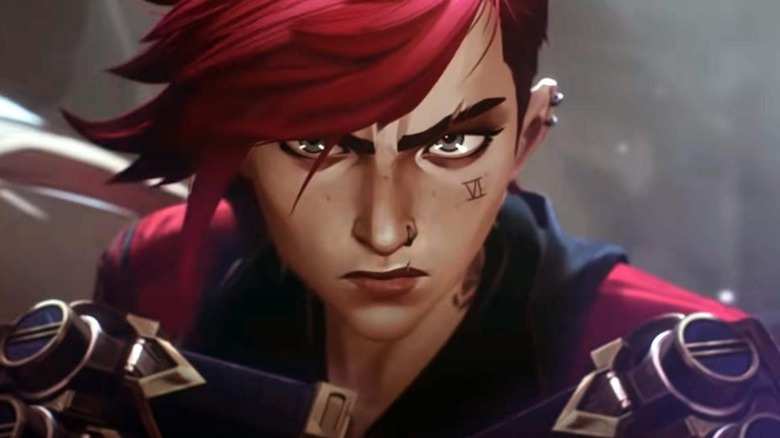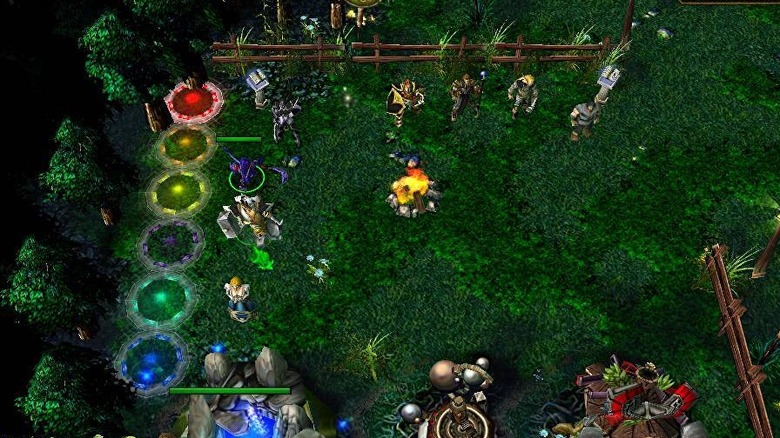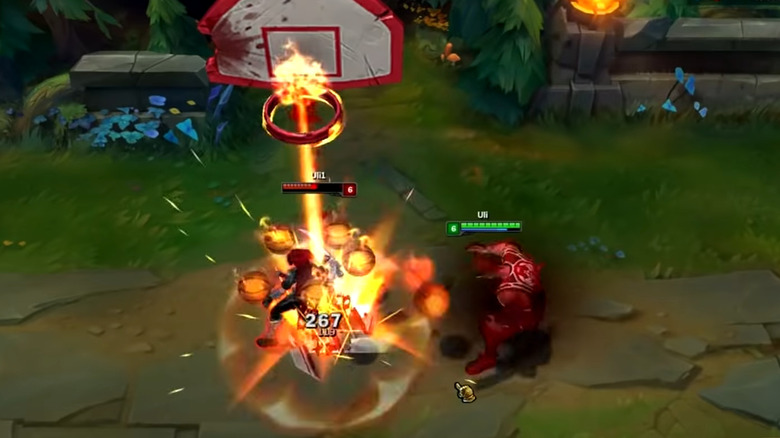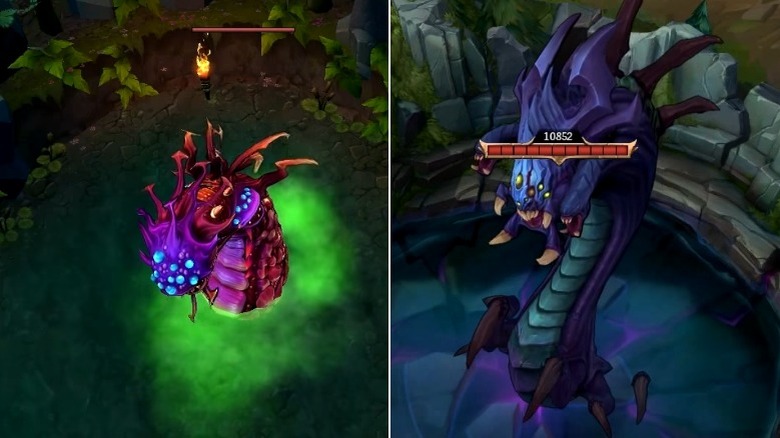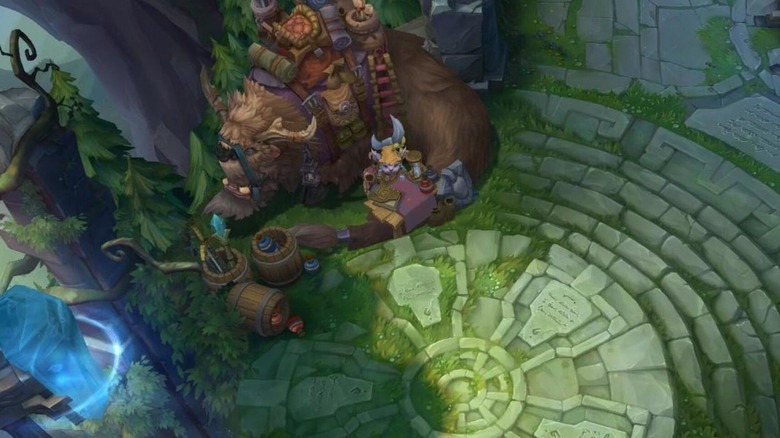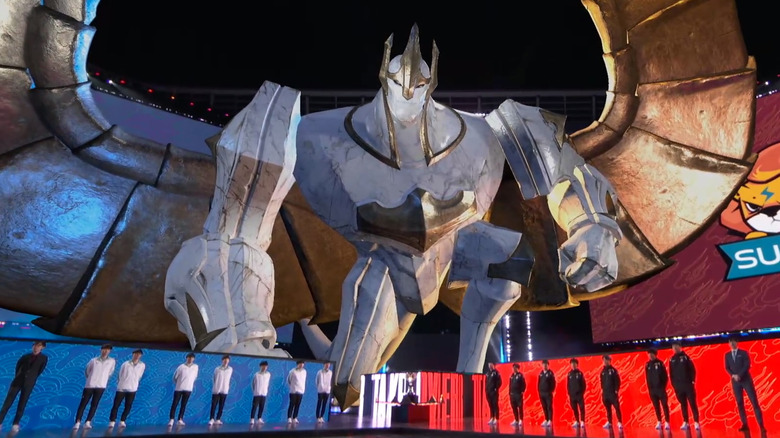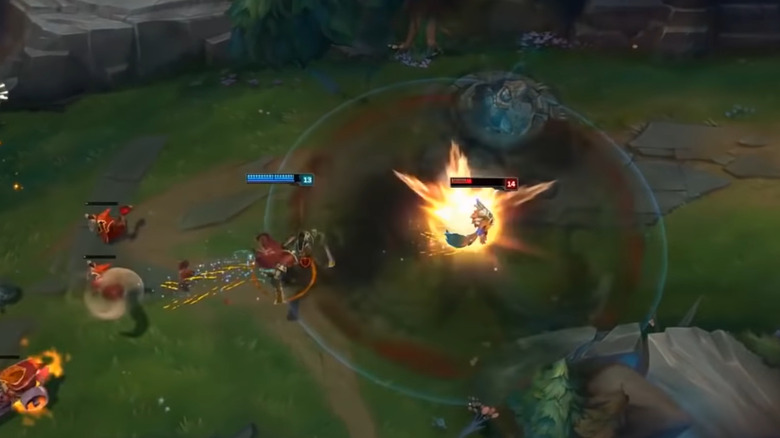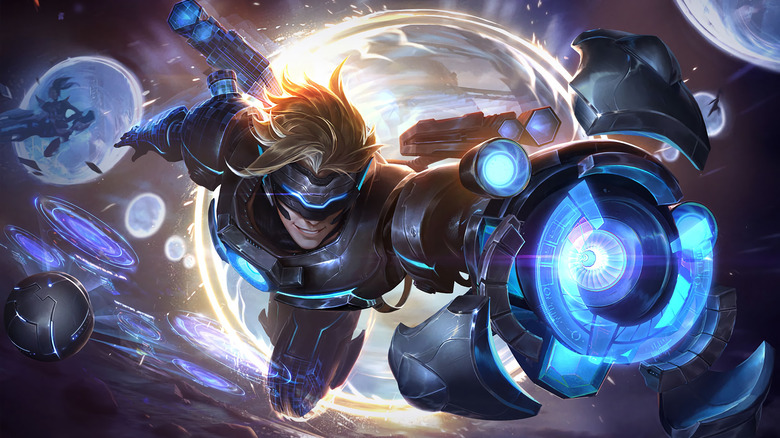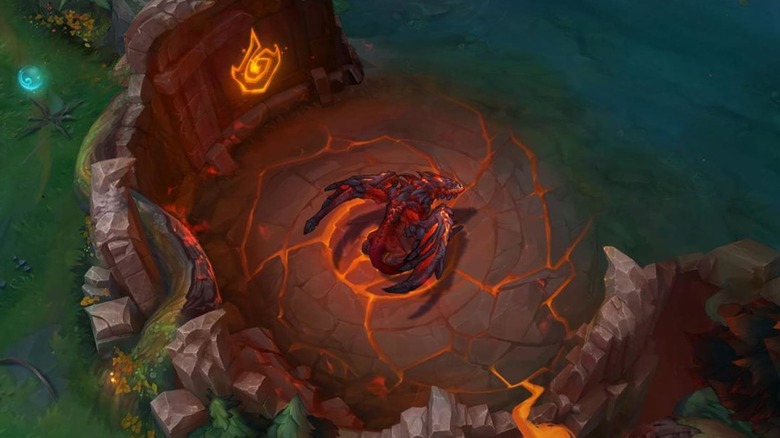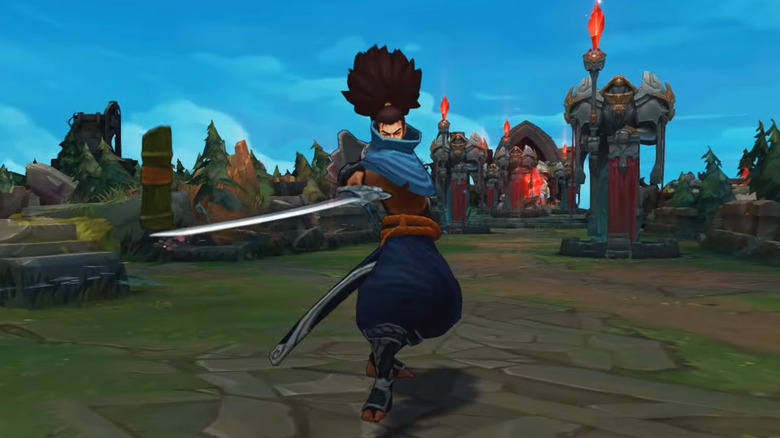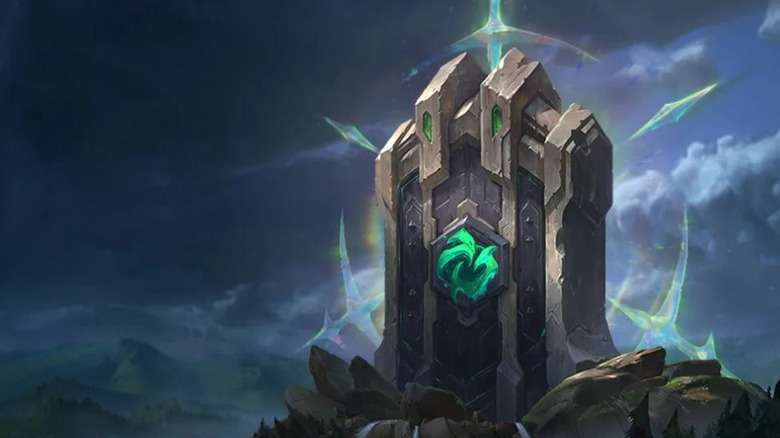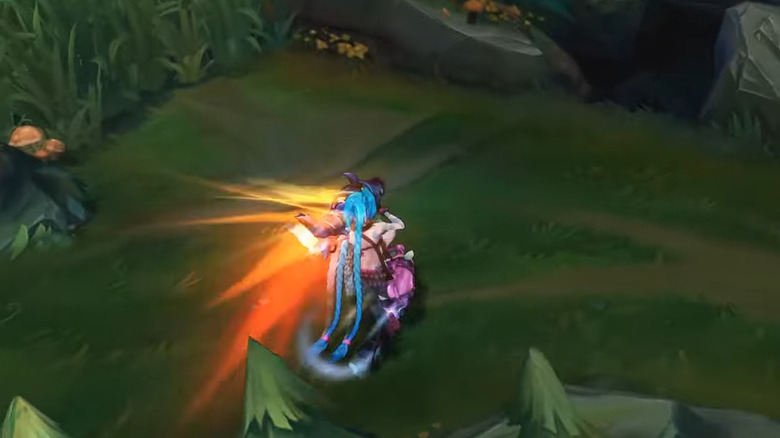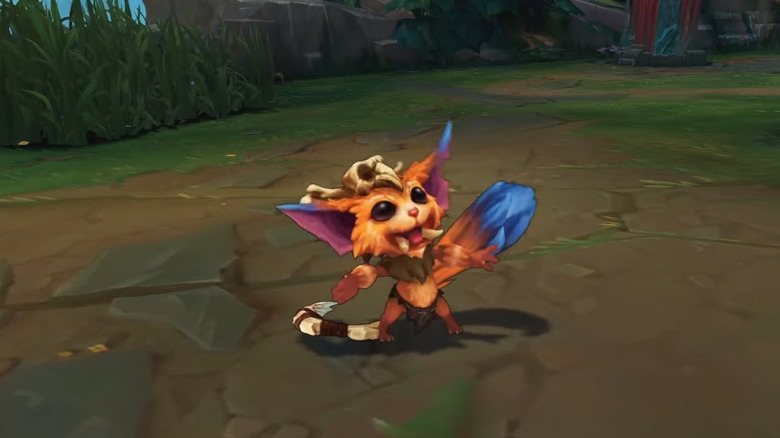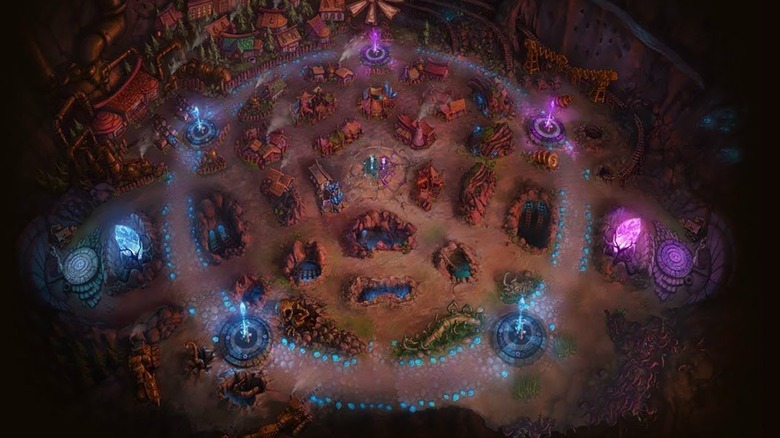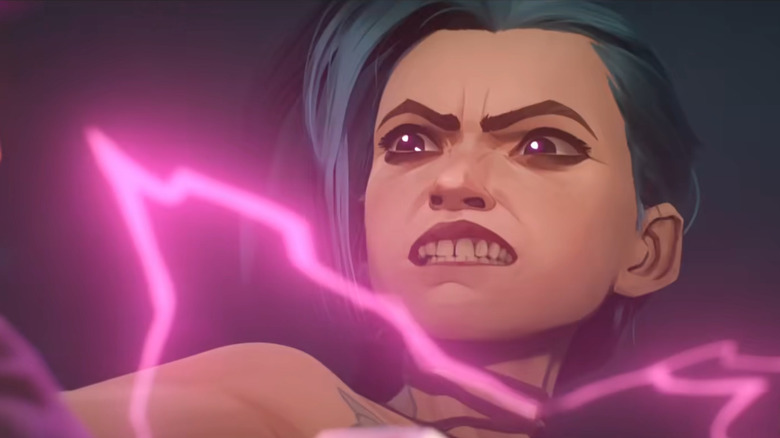The Stunning Transformation Of League Of Legends
Since its release into beta back in 2009, "League of Legends" has grown into one of the most recognizable and played games across the entire world. The dynamic, 5v5 MOBA (Multiplayer Online Battle Arena) formula was, in part, pioneered by Riot Games, and It remains an industry leader to this day.
But what did "League of Legends" look like before it became a global phenomenon? How did it help grow the MOBA genre? And what are the biggest differences between old school and new school players?
Prior to Riot Games' expansion of the "League of Legends" universe with "Arcane," and prior to its ambitions to dominate the gaming industry across genres with a plethora of new releases for the 2020s, "League of Legends" looked and felt much different. So, it's time to dive into the history books and see what kind of transformation "League of Legends" has made over its decade-plus lifespan.
Riot Games' Origins
"League of Legends" enjoys sustained success due to trailblazing the MOBA (Multiplayer Online Battle Arena) genre. However, the MOBA genre was around before "League of Legends" took its crown. The first MOBA was created in 2002 as a fan-made custom game within the "Warcraft 3: Reign of Chaos" map editor. It was called "Defense of the Ancients," or "DotA,"–the game which would eventually turn into "Dota 2."
Popularity for the "DotA" custom game reached its peak when Steve "Guinsoo" Feck released an upgraded version called "DotA Allstars," (per theScore esports). Steve "Guinsoo" Feck would go on to be one of the cofounders of Riot Games.
His other collaborators were also "DotA" fanatics. According to an interview with the Washington Post, Riot Games' other two co-founders, Marc Merrill and Brandon Beck, were college friends who bonded over their shared love of the proto-MOBA. Furthermore, their original pitch to investors for Riot Games was based on creating a new "DotA-style" game.
Ultimately, the founding members of Riot Games all shared history with each other through "DotA"– from helping found the MOBA genre to continuing to grow it to this day.
Expansion of the Champion Roster
Replayability is one of "League of Legends'" stronger suits. Throughout its 10+ lifespan, one map — Summoner's Rift — has remained the constant, most-popular battlefield. The variables within that constant are the champions, and when "League of Legends" released into beta in 2009, it only had 20 playable champions (per Sirus Gaming). Classic and simple champions like Annie and Teemo populated the Rift in its earliest days.
Between 2009 and 2012, Riot Games rapidly expanded the champion roster, adding a new playable character on a monthly basis. As each champion was added to the roster, however, the game became harder and harder to keep balanced. Ever since 2012, the time in between champion releases is much longer, and Riot Games has instead preferred to rebalance and rework many existing champions.
As of September 2022, "League of Legends" has more than 140 playable champions. Having such an expansive roster comes with both its strengths and weaknesses: the learning-curve for knowing every champion is much higher, but the replayability and variety offered with many champions allows players to truly find their favorites.
Map Visual Update
First impressions are everything for a game, so making sure players are enticed by what they see on screen is very important for game developers. Typically, good graphics, a coherent art style, and a unique flavor will carry a game to where it needs to be aesthetically, and that was the idea that Riot Games ran with in 2014 when it decided to overhaul the looks of its most iconic map, Summoners Rift.
The map update that was officially rolled out after the 2014 season contained many changes from the original appearance of "League of Legends" that was released more than 5 years prior. Most notably, the amount of "visual noise" was reduced as much as possible (per League of Legends). In a game like "League of Legends," where there are upwards of 10-20 abilities and effects going off within a small window during a fight, it is imperative to be able to discern exactly what is happening on screen. Filtering through this chaos was harder with the textures on the map before Riot reduced the amount of color, saturation, and detail within the negative spaces of the map.
Looking back on the visual changes made to the map more than 8 years ago now, it is hard to imagine "League of Legends" looking any different. And while the old map does look old and outdated now, it did have Halloween and Christmas variants that fans have been clamoring for a remake of since the original map update. Only time will tell if we get future Summoners Rift variants in the future.
Items of the Past
"League of Legends" has existed as live-service game for more than a decade. The amount of changes to the game during that time is hard to overstate, but one of the most readily apparent ways of tracking its changes is the item shop availability to players.
Some cornerstones of "League of Legends" have persisted throughout the game's entire lifespan–Trinity Force, Doran's items, and others like Rabadon's Deathcap have remained largely the same the entire time. Others, however, like gold generation items and old jungle items are now relics of the past, only remembered by those who played with them at the time. In fact, many LCS professional players now struggle with remembering some of these now classic items.
Specifically, gold-generators like Heart of Gold and Philosopher's Stone were removed due to their flexibility and overpowered nature in team games. Jungle items like Madred's Razors and Wriggle's Lantern were retired in favor of a role rework for junglers. And other classics like Deathfire's Grasp were removed because its burst potential made balancing mages a nightmare when every single one of them had a scaling nuke ability on top of their kits. As the game continues to age, items will continue to come and go, but these classics will likely never see the light of day again on the Rift.
Growth of Esports
When "League of Legends" burst onto the MOBA scene in the early 2010s, the Esports scene was still an infantile industry, especially in the global west. Competitive gaming had caught on in Korea with the success of games like "Starcraft 2," but North America and Europe were lagging behind.
One of the key driving factors for the popularization of Esports in North America, Europe, and East Asia was simply the success of "League of Legends," and the MOBA genre more broadly. For context, the Season 1 Championship for "League of Legends" was held in a backroom at Dreamhack in 2011, and its competitors were only North American and European teams fighting for recognition. In just a few years time, the Season 3 Championship was a global affair with team competing from all over the globe to a broadcast that reached tens of millions of collective viewers (per Polygon).
"League of Legends'" rapid ascent to the pinnacle of competitive gaming happened alongside other prudent business decisions by Riot Games, such as introducing a league system for teams to play in between large scale tournaments. The LCS, LEC, LCK, and host of other leagues were formed, and ever since they have been the vehicles for competitive "League of Legends." Interestingly, only the North American league, the LCS, decided to go with a franchise system where teams are granted more security for their participation within the League. Regardless of structure, however, "League of Legends" is still a premier Esport more than a decade after its first tournaments.
Mythic Items
Before Season 11 in 2021, itemization for champions was a lot more free flowing than it is today. In "League of Legends," each champion is equipped with 6 item slots they can use to buy items that will customize how their champion will perform that game. In those 6 slots, 1 of them is used for movement-speed-enhancing boots, while the other 5 could be mixed and combined in any fashion the player desired.
With dozens of completed items and hundreds of item components available, the possible amount of combinations for item buildouts was near infinite. That was, until, the Season 11 changes that turned certain items into "Mythic Items." In this new system with Mythic Items, players were only able to purchase a single Mythic Item that served as a "build-around" item that would unlock further powers the more periphery items were built around it (per DotEsports). Therefore, the amount of item combinations took a steep nosedive because every champion is now pigeonholed into taking one of its viable Mythic Items to build around.
Classic items like Trinity Force were turned in Mythic Items, while others like Goredrinker or Immortal Shieldbow were freshly invented for these changes. Since this update, Mythic Items have become one of the most key aspects of game balance for both players and developers to pay attention to, as their meta-defining powers morph with each new patch.
Super Skins
Free-to-play games are great at getting players into their lobbies due to their low barrier of entry. However, sticking around as a free-to-play game is tricky because the financial viability of the game is based on the sale of microtransaction-related content. "League of Legends" is no different from other free-to-play, Games-as-a-Service models that rely entirely upon sales of cosmetics and game unlocks.
In the case of "League of Legends," the primary driver of profitability for Riot Games comes from the sale of champion skins. Every champion in "League of Legends" has alternate looks, analogous to alternate uniforms worn by sports teams, that are purchasable for real-life money. Before 2012, the most expensive skins on the market went for around $10 USD, and most of the skins available were simple recolorations.
That all changed, however, with the introduction of Pulsefire Ezreal. This new "Legendary Skin" came with a brand new model that transformed throughout the game, new animations, and new voice lines that cost the player upwards of $20 USD. Since then, skins sets like Pool Party skins have become incredibly popular, more and more Legendary Skins and Ultimate Skins have graced Summoner's Rift, and even Louis Vuitton is in on the "League of Legends" skin game now.
Elemental Dragons
In a team game like "League of Legends," it is imperative to have collective objectives so that everybody is forced to work together. Another key aspect to team objectives is that they keep the pace of play up so that games don't bog down into an unending fight. Dragons, Baron Nashor, and the Rift Herald are all team objectives in "League of Legends" that help speed up the game while providing valuable enough buffs that teams want enough to fight for them.
But, the balance between these game-shaping objectives is precarious. When "League of Legends" was released, the Dragon objective gave lots of gold and experience to every member of the team who slayed it. This led to teams getting a large advantage off the first slain dragon, so high-skill play revolved around winning the first Dragon fight. One-dimensional play is not what Riot Games had intended with the Dragon objective, so it decided to change it in May of 2016.
The Elemental Dragon system was instituted then, changing the reward for slaying Dragons from gold and experience to other stat buffs that changed based on what element the Dragon was. At launch, there were 4 elemental dragons, and now there are up to 6 possible elemental dragons that can spawn. Slaying 4 elemental dragons unlocks a Dragon Soul aspect, which is where the real strong buff now lies. So, instead of games snowballing after one slain dragon, teams now strategize around taking 4 total dragons in order to snowball the games in their favor.
Draft Pick Role-Queue
For a long time, in between 2009-2016, players would queue up for a game of "League of Legends" without any declaration of their intent to play a specific role. So, a game would fire up into a lobby, and immediately, the team's chat would be spammed with players trying to "call" a role before anybody else did. Within a few seconds of the game lobby loading, teams and players would be arguing over who gets to play what role. And, of course, barely anyone was queuing up to play support, so someone was often left with the short-end of the stick.
And, predictably, the copious amounts of arguments that generated from this "solve-it-yourself" framework of lobby-generation was frustrating. Loading into a game to read, "Mid or feed," as the first instance of team communication was not appealing.
In 2016, this would all change for the better with the introduction of Draft Pick queue that allowed players to choose a primary and a secondary role prior to joining a team. This meant that, most of the time, players were able to play the role they wanted to while keeping queue times low. There was a brief experiment with Team Builder, a version of Draft Pick where players not only indicate what role they want to play but the exact champion they want to play before joining a team, but this was too clunky and led to long queue times.
Runes Pages → Keystone Masteries
The early days of "League of Legends" had a different microtransaction landscape than it does today. There were not nearly as many champions or skins to spend money on back in the day, but one key aspect to the actual gameplay of "League of Legends" was locked behind paywalls only breach-able by playing the game.
Every game, players chose their Masteries through branching trees, and they also chose a Rune Page to help give their champions stats prior to the game starting. These Rune Pages consisted of 9 Marks, 9 Seals, 9 Glyphs, and 3 Quintessences, each of which was a decision in its own right for each champion's ideal stats. This system gave lots of room for creativity and differences to emerge for each champion. At the same time, however, these Rune Pages were incredibly expensive in terms of gameplay time required to farm the necessary resources (IP).
Riot Games combined Runes and Masteries in 2016 to remove this high barrier-to-entry that was also probably more complex than the pre-game loadout section needed. The system present today, called Runes Reforged, took the blended Runes and Masteries systems and condensed them into Keystone-led pages.
Reworks All Around
After the rapid expansion of the champion roster between 2009-2012, Riot Games refocused much of their efforts into rebalancing and reworking the game. Every patch in "League of Legends" tweaks a few numbers here and there for items stats, champion abilities, and other minute details. And this constant state flux produces likewise chaotic and changing metas.
As a result, champions that were designed for "League of Legends" in 2009 — with items from 2009, opposing champions from 2009, overall game understanding from 2009, etc. — don't fit the complexity of the game in its current state. In an effort to combat older champions from becoming outdated, Riot Games opted to do full reworks for entire roles, including champion redesigns for many old heroes.
The Marksman class received an overhaul in 2016, Juggernauts were gifted a refreshed role identity in 2015, and Mages got new magic in 2016. Riot also reworks champions on an individual basis, with Udyr being its most recent update. As "League of Legends" continues to grow and evolve it will have to continue updating itself so that all its new pieces can fit with the old, and Riot Games is already planning for it.
Blue Essence Economy
In 2018, "League of Legends" saw a major shakeup in not only its Rune Reforged system but also its entire in-game economy. One of the major reasons that Runes needed reworking was because they were too expensive in terms of IP, the original in-game currency obtained only through playing the game (no USD purchase possible). So when Riot Games fixed the Rune system, It used that as an opportunity to improve the entire in-game economy.
IP was converted into Blue Essence and existing players that had IP and used IP to purchase champions in the past were handsomely compensated for the economy conversion. Blue Essence, as opposed to IP, is obtainable through daily quests and event progression. Also, lootbox-style Hextech Chests and Champion Capsules were added to the game, which give players discounts on purchasing skins and champions with the corresponding Essence or they can be disenchanted to acquire more Essence.
In short, "League of Legends" gained much more microtransaction capability. But, at the same time, the economy of "League of Legends" rewarded playing much more, so obtaining new skins and champions while remaining free-to-play became easier as well.
New and Rotating Game Modes
Ambition has always been one of Riot Games' strong suits. It especially shows in their attempts to expand beyond the Summoner's Rift formula it helped found the MOBA genre with.
In 2011, it released Dominion, a fast-paced, 25-minute objective control mode. This was another 5v5 mode set to be a permanent option for "League of Legends" players. The Crystal Scar was the name of Dominion's map, but not enough fans were keeping the new map populated for Riot Games to continue its support. In 2016, it shut down Dominion for good.
The Twisted Treeline was the other 3v3 classic mode offered from the beginning of "League of Legends." In a similar vein to Dominion, it gained its owned small and dedicated subset of fans that were disappointed to see it officially retired as a game mode in 2019.
Riot Games doesn't only kill game modes, though. Sometimes, it helps foster the growth of community made modes, like ARAM. In 2012, Riot made an official version of ARAM (All-Random-All-Mid) and it is still supported to this day. Riot has also created other fan favorite game modes like URF that rotate in-and-out of playability during seasons.
Expanded Universe
More than a decade of dominance within the MOBA genre has, apparently, left Riot Games wanting for more. The same company that started off with college friends bonding over some "DotA" custom game is now on the cusp on becoming one of the most well known gaming IPs across the world.
The hit animated series "Arcane" proved to audiences that the lore within "League of Legends" was ready to take the next step beyond Summoner's Rift and into other mediums. Beyond "Arcane's" highly-anticipated next season, Riot Games has many other endeavors on the horizon.
It's already released an turn-based, rogue-like game, "Ruined King: A League of Legends Story," It released a card game with multiple expansions, "Legends of Runeterra," it also released an auto-battler with multiple expansions and its own competitive circuit, "Teamfight Tactics." Oh yeah, and It released a pretty popular shooter called "Valorant."
Riot Games' biggest ambitions going forward lie with its upcoming fighting game and MMORPG, as well as expanding upon its animated narrative series. There's no stopping in sight for Riot Games as it tries to take "League of Legends" to unprecedented gaming heights.

